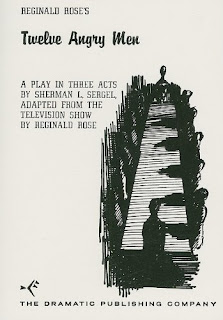2nd Field Experience Blog, EGL 441 Samantha Summers
In one of the lessons I observed, the teacher wanted the students to learn what stereotypes are and how the depiction of stereotypes are prevalent in today's media. I believe that her lesson aimed to fulfill the following New York State Next Generation Standard: "8R9: Choose and develop criteria in order to evaluate the quality of texts. Make connections to
other texts, ideas, cultural perspectives, eras, and personal experiences. (RI&RL)." Let's trace the lesson from the end of it back to the beginning. The teacher completed the lesson by projecting photos on the SmartBoard that depicted various instances of stereotyping in media. She asked the students to analyze each photo and identify what the stereotype was that the photo was trying to portray. For instance, one photo was of a billboard showing that women are the ones who "normally" do the cooking in a household. The teacher even integrated a photo that had text in a different language. However, the image was ripe for analysis, so the students could understand the stereotype being portrayed even if they could not understand the other language. Prior to the activity with the photos, the teacher had the students create a short written response to the question, "How do we use/interpret stereotypes?" The students had a class discussion on their answers to this question. The teacher reminded them to be gentle and respectful when discussing sensitive topics such as this one. Before the written response and class discussion, the teacher began the class with a game. The teacher chose three student "minglers" and had them leave the room and re-enter wearing paper headbands that she had made. The minglers were not aware of what their headbands said. Then, the teacher held a mingling session in which the other students went up to the three minglers and gave the minglers clues as to what their headbands said. The three minglers would then guess what their headbands said based on these clues. Each headband said something like "nerd," "jock," and "popular." This game was a fun opening to the lesson on stereotypes, and the students figured out on their own that the game had to do with stereotypes. Ultimately, the teacher was successful in demonstrating to the students that stereotypes are perpetuated by the media and that people in their everyday lives may be prone to thinking about others in a stereotypical way because it is part of modern culture. By the end of the lesson, the students expressed an understanding that stereotyping is wrong. The teacher used this lesson to segue into their unit on the play "Twelve Angry Men" by Reginald Rose in which stereotypes play a large role. Regarding the standard I mentioned at the beginning, the teacher prompted the students to make connections between the text "Twelve Angry Men" and cultural perspectives. In my future teaching career, I will definitely aim to utilize a variety of instructional strategies, such as the combination of a class discussion and get-up-and-move activity in this lesson, in order to enhance students' understanding of concepts (such as stereotyping) and connect these concepts to a text.

Hello Sam,
ReplyDeleteThe creativity of the teacher you got to work with is absolutely inspiring; one of my greatest fears on the path to becoming a teacher is that I will not be able to emulate such creativity, mostly out of fear that the activities I will present may fall onto the shoulders of uninterested students, or ones who find such activities childish. I imagine that the creation process of these activities change with every set of students; even if the general idea is reused from year to year, a copy-and-paste version would likely be counterproductive if it doesn't blend well with the current group of students. Something I really appreciate that your teacher did, however, was deliver this messages without necessarily needing to explain it word for word, which may potentially come off as boring for students who simply do not want to be lectured. I hope to obtain such creativity in due time, hopefully after enough time observing has passed, though I am confident it will be a school that we will ALL have to work with even years after getting into the field.